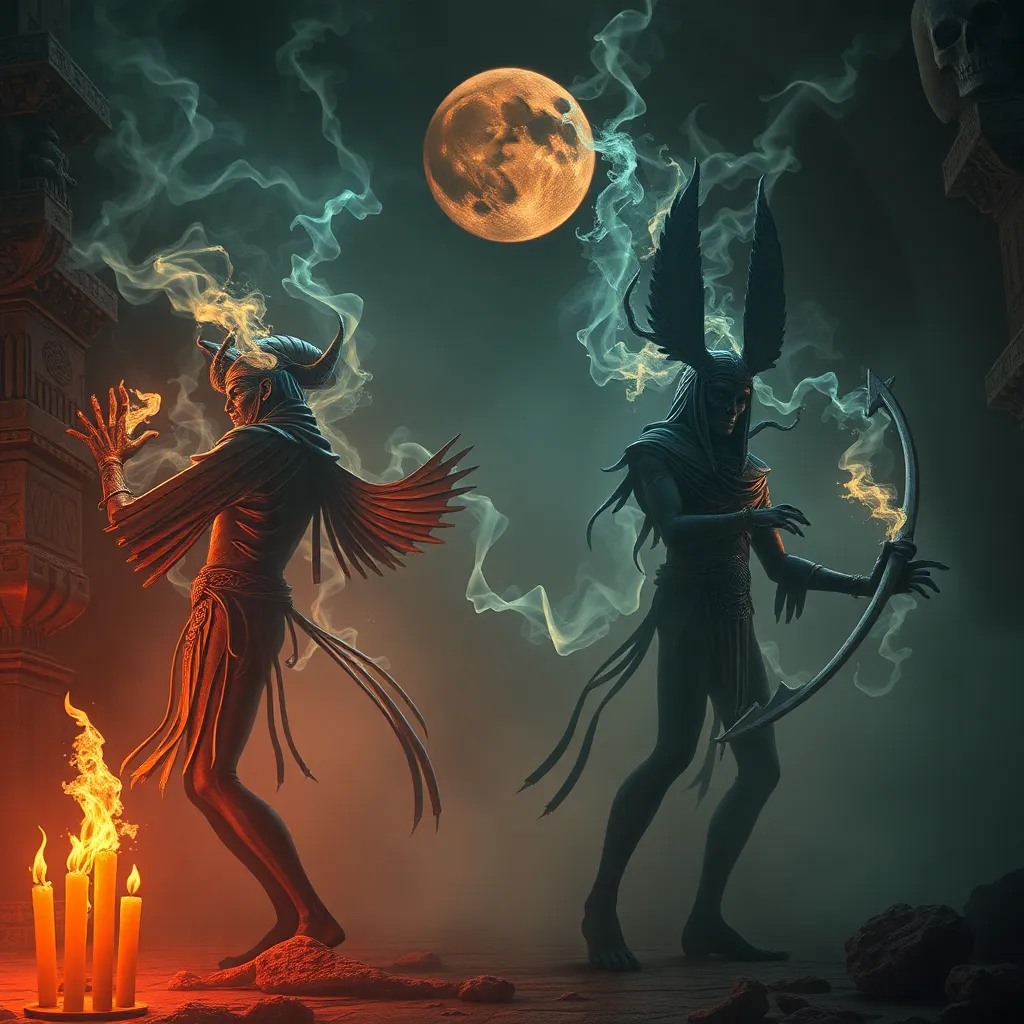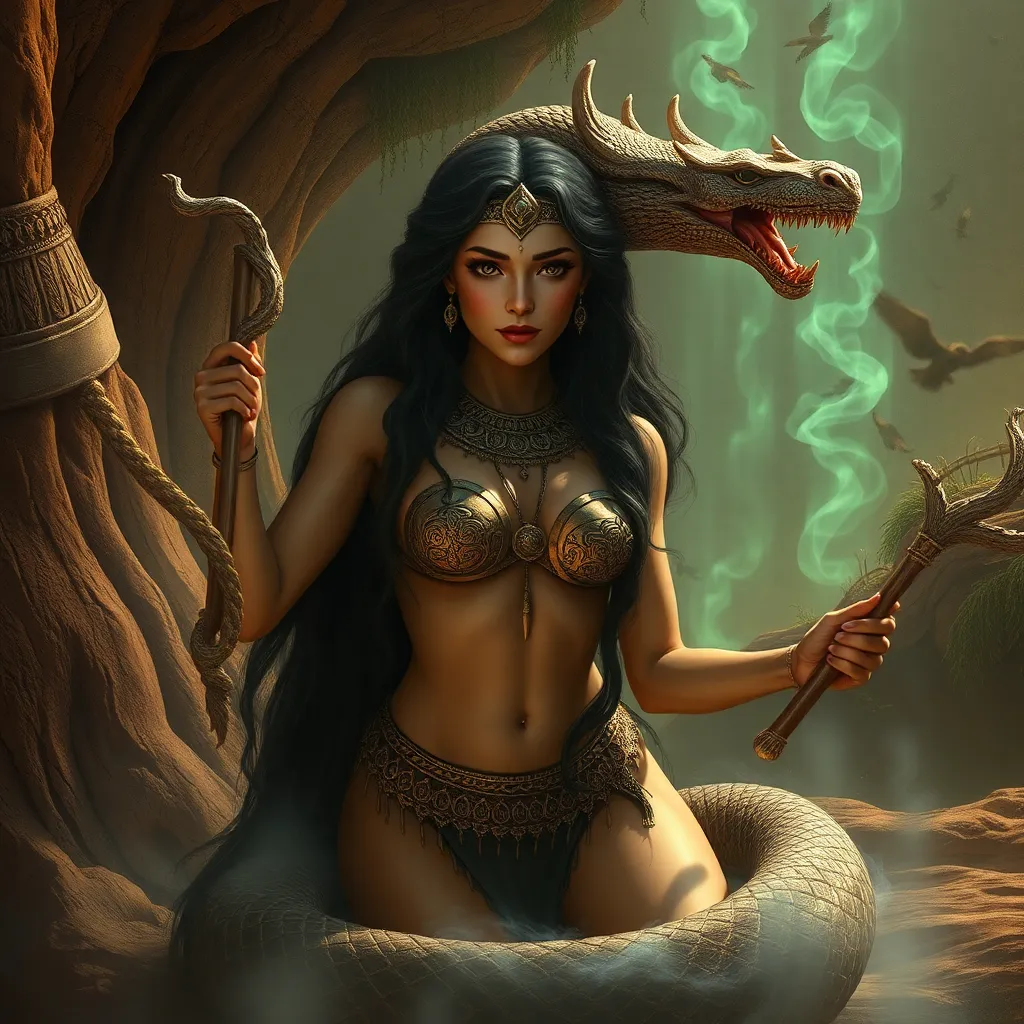The Roman Interpretation of Cerberus: Exploring the Differences and Similarities
I. Introduction
Cerberus, the formidable three-headed dog, is one of the most iconic figures in ancient mythology. This creature serves as the guardian of the Underworld, preventing the dead from escaping and the living from entering without permission. Understanding the Roman interpretations of Cerberus is crucial as it reveals how cultures adapt and transform mythological figures to fit their own narratives and beliefs.
The purpose of this article is to explore the origins of Cerberus in Greek mythology, examine how the Romans adopted and adapted this figure, and highlight both the similarities and differences in interpretations between the two cultures. Through this exploration, we can appreciate the enduring legacy of Cerberus across time and cultures.
II. Origins of Cerberus in Greek Mythology
Cerberus is deeply rooted in Greek mythology, often described as a monstrous three-headed dog, with a serpent for a tail and the ability to breathe fire. His primary role was as the guardian of Hades, the realm of the dead, where he ensured that souls entered but did not leave.
In various mythological stories, Cerberus is featured prominently, including in the Twelve Labors of Heracles, where Heracles is tasked with capturing the beast and bringing him to the surface. This task underscores Cerberus’s formidable nature and his association with the challenges of confronting death and the afterlife.
The cultural significance of Cerberus in ancient Greece is profound. He embodies the fears of the unknown and serves as a reminder of the inevitability of death, while also playing a crucial role in the mythological narratives that shaped Greek beliefs about the underworld and the afterlife.
III. The Roman Adoption of Cerberus
The Romans adopted Cerberus into their mythology, integrating him within their own cultural framework. While the core characteristics of Cerberus remained similar, the Romans adapted his image and role to better fit their religious practices and societal values.
Roman interpretations of Cerberus retained the three-headed form and his role as a guardian of the Underworld. However, the Romans placed greater emphasis on his role within their own religious practices, often associating him with the afterlife and funerary rites. The influence of Greek mythology on Roman beliefs is evident, as the Romans often borrowed and modified Greek deities and figures to create a unique mythological tapestry.
IV. Key Similarities Between Greek and Roman Interpretations
A. Shared characteristics of Cerberus
- Three-headed structure: Both cultures depicted Cerberus as a three-headed dog, symbolizing his formidable and fearsome nature.
- Guardian of the Underworld: Cerberus served the same primary function in both mythologies, acting as the gatekeeper to the realm of the dead.
B. Similar mythological narratives and roles
In both Greek and Roman stories, Cerberus is involved in myths that emphasize themes of death, fate, and the afterlife. His appearances in tales, such as Heracles’ labor, are consistent across both cultures.
C. Common symbolic meanings in both cultures
Cerberus symbolizes the boundary between life and death, the fears surrounding mortality, and the protective nature of the afterlife. These themes resonate in both Greek and Roman interpretations, underscoring his significance in their respective mythologies.
V. Distinct Differences in Roman Interpretations
A. Changes in Cerberus’s appearance or traits
While the three-headed aspect remained, Roman art and literature sometimes depicted Cerberus with variations, such as different colors or additional features like wings or more pronounced serpentine characteristics.
B. Variations in stories and mythological context
Roman adaptations often included Cerberus in tales that emphasized moral lessons or the consequences of one’s actions, reflecting Roman values. For instance, Cerberus was occasionally portrayed as more of a servant to the gods rather than merely a guardian.
C. The role of Cerberus in Roman religion and rituals
In Roman culture, Cerberus was sometimes invoked in funerary practices, where he was seen as a protector of the souls of the deceased. His image was used in tombs and funerary art, highlighting the Romans’ emphasis on the afterlife and the rituals surrounding death.
VI. Cerberus in Roman Art and Literature
A. Depictions of Cerberus in Roman sculptures and paintings
Roman artists created numerous representations of Cerberus in sculptures and paintings, often showcasing his intimidating presence. These artworks illustrated not only his physical characteristics but also his role as a guardian.
B. References to Cerberus in Roman literature
Cerberus appears in various Roman literary works, including those by Virgil and Ovid, who incorporated him into narratives that explored themes of love, loss, and the afterlife. These references reflect the Roman fascination with death and the underworld.
C. Comparisons to Greek artistic representations
While Greek art focused on the heroic battles involving Cerberus, Roman art tended to emphasize his role in the context of funerary practices, showcasing a shift in cultural focus from heroism to the reverence of the dead.
VII. Cerberus’s Legacy: Impact on Later Cultures
A. Influence of Roman interpretations on later European folklore
The figure of Cerberus has influenced various aspects of European folklore, often being referenced as a guardian of the underworld or as a symbol of death. His presence can be seen in various literary and artistic traditions throughout history.
B. Cerberus in popular culture and media today
In modern times, Cerberus continues to be a prominent figure in popular culture, appearing in literature, films, video games, and other media. He is often depicted as a fierce guardian, symbolizing the dangers of the unknown and the afterlife.
C. The enduring symbol of Cerberus in modern interpretations
Cerberus remains a powerful symbol of the boundary between life and death, reflecting humanity’s ongoing fascination with the afterlife and the mysteries surrounding it. His legacy endures in various forms, reminding us of the rich tapestry of mythology that transcends time and culture.
VIII. Conclusion
In summary, the exploration of Cerberus reveals both the similarities and differences between Greek and Roman interpretations of this iconic figure. While both cultures recognized him as a guardian of the Underworld with shared characteristics, the Romans adapted his role to align with their own religious and cultural values.
Understanding these mythological interpretations is significant as it reflects how cultures influence one another and evolve over time. Ultimately, Cerberus stands as a testament to the enduring nature of mythology, bridging ancient beliefs with modern interpretations.



